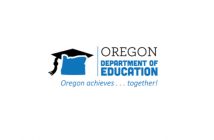Roads are a critical part of our transportation system for everyday travel and commerce. Nevertheless, they can also be extremely dangerous if not properly designed and managed. Over 40,000 people die every year in road crashes in the United States, with millions more injured. Improving road safety requires a holistic approach that carefully examines road designs, signage, speed limits, driver education, enforcement, and coordination between stakeholders. We can significantly reduce injuries and deaths from traffic accidents by adopting a comprehensive approach that focuses on caution and safety principles.
Road Design
Road design plays a monumental role in safety outcomes. Wider lanes, longer sight distances, gentler curves, dedicated turn lanes, median barriers and roundabouts help improve safety considerably. Caution road signs are also critical, warning drivers of hazards and driving conditions. Roundabouts are much safer than traditional intersections. They reduce crashes by around 75% because they have fewer conflict points and lower speeds during collisions. Other critical design choices like rumble strips, brighter and wider lane markings, and wider road shoulders promote attentive driving. Engineers ensure the safety of roads from the very start, before any concrete is ever poured, by following established design guidelines, standards, and best practices.
Traffic Signs, Signals and Markings
Traffic signs, signals, pavement markings, and hazard markers are vital for road safety. They warn drivers of dangerous conditions and hazards ahead while providing essential information to regulate speed and right-of-way. Larger, brighter signs with retro-reflective sheeting catch drivers’ attention faster during daytime and nighttime driving conditions. Updating old, faded signs ensures vital information is clearly visible in all weather. Proper placement based on sight distances also allows motorists sufficient time to perceive, react and respond to warnings and changes in roadway environment. Additionally, optimizing signal timing coordinates traffic flow while accessible pedestrian signals and sidewalk networks give vulnerable road users a safer way to navigate busy streets.
Managing Speed
Since higher speeds dramatically increase both the likelihood of crashes and their severity, actively managing speed is essential for safety. Conducting proper engineering studies helps transportation agencies set realistic speed limits that match a roadway’s design. Highly visible speed limit and reduced speed ahead signs further remind motorists of legal speeds, while dynamic speed display signs reinforce the message. Roadway design elements like tighter turns and rumble strips also naturally discourage speeding. Speed enforcement programs provide additional motivation for drivers to obey posted limits. As well as this, setting appropriately safe speed limits around schools, parks, neighborhoods, and downtowns helps to protect pedestrians of all ages. Designated slow speed zones notify drivers to further reduce speeds in busy populated districts.
Driver Education and Training
Educating all road users promotes good decisions and safe driving behaviors. Licensing exams assess basic vehicle handling skills and rules knowledge for new drivers. However, continued education helps prevent complacency and high-risk actions behind the wheel over time. Community outreach campaigns bring added attention to chief accident factors like impaired and distracted driving to encourage responsible habits daily. Targeted teen driving programs give young motorists extra behind-the-wheel training and experience managing complex situations.
Promoting crash avoidance safety features inside vehicles, like electronic stability control and automatic emergency braking, also demonstrates how technology boosts roadway safety. Defensive driving courses help motorists anticipate dangerous situations while cycling skills courses teach bike riders how to navigate streets safely. Together, knowledge and skill development make anyone’s journey safer whether they travel by bike, motorcycle, or truck.
Data Analysis and Planning
Careful data analysis guides effective safety improvements over the long term. Police accident reports contain detailed documentation of collision contributing circumstances and roadway characteristics. Identifying high-crash injury corridors and trends helps transportation agencies pinpoint problem areas needing attention whether an unsafe intersection, faded pavement markings or lack of sidewalk. Conducting before and after studies accurately assesses countermeasure success when making upgrades. Furthermore, continually monitoring safety metrics identifies new or ongoing trouble spots needing work. This allows planners to account for changing development patterns and traffic volumes. Regional safety planning committees can coordinate efforts for maximum benefit across municipal boundaries. These plans provide a strategy to guide project priorities and target spending for the greatest traffic safety impacts.
Working Together
Since roadway safety contains many interrelated facets, close coordination between transportation agencies, police, community groups and government leaders provide the most widespread benefit. Working together under a formal transportation safety planning program allows teams to best analyze safety data to target spending of limited budgets for maximum lifesaving impact. This also allows consistency between policies, education efforts and road projects toward the same end goal. In addition, shared accountability keeps all partners focused on achieving agreed upon safety goals and performance metrics year after year.
In Summary
Creating safe roads requires comprehensive attention across design, maintenance, use and regulation. Staying current with standards and best practices tailored to the needs of each street ensures the right sight distances, lane widths and visibility to prevent deadly crashes. Working together under a formal safety strategy provides coordinated management of all the factors under our control to enhance safety on every trip, whether across town or across the country. While zero deaths might seem difficult to achieve, it gives transportation professionals an important target for designing road systems to reduce preventable fatalities as much as possible. Staying focused on continual safety improvements creates safer, smarter, and more reliable roads, benefiting all road users well into the future.




